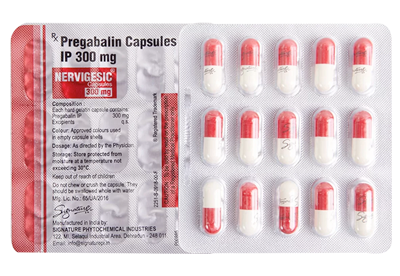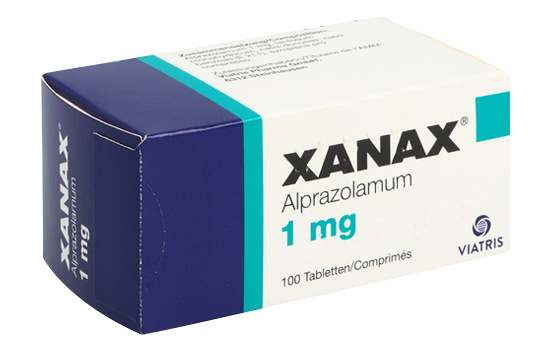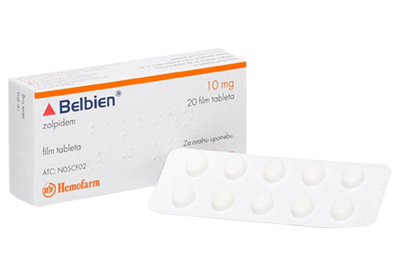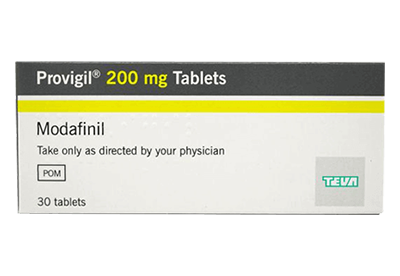
Pregabalin
Are you dealing with constant nerve pain? Do you have partial seizures? Does anxiety rule your life? These problems are more common than people think. Based on current global statistics, almost 10% of people experience neuropathic pain, 4% of people have anxiety at any given time, and more than 70 million people suffer from seizures.
£5.97 £3.77
Go to PharmacyWhat do they all have in common? These conditions make daily life exhausting, frustrating, and more challenging. However, this does not have to be the case with pregabalin. This medication was designed with these conditions in mind, giving people the physical and mental relief that they are looking for. This treatment also comes in multiple dosage strengths for those who need the extra potency to get through the day comfortably.
Keep on reading to discover the mechanisms behind pregabalin, how effective it is compared to its counterparts, and why more people are choosing this reliable medication.
What is Pregabalin?
Pregabalin 300mg was first created in the 1990s as an anti-epileptic drug. After further development and testing, this medication became FDA-approved in 2004 to treat neuropathic pain, neuralgia, and minor seizures in adults. This medication was branded Lyrica, and in the same year, it was also approved by the EMA.
In 2007, pregabalin became the first ever FDA-approved solution for fibromyalgia, and within the same time frame, this medication also started being used for generalized anxiety disorder (GAD). After the final patent expired in 2018, generic alternatives started hitting the shelves, which gave people a much more affordable and accessible way to manage their condition.
Today, pregabalin is one of the most widely administered medications for all of these above conditions. In fact, this medication's popularity has increased by 25% over the past 5 years, based on an article by The Pharmaceutical Journal.
How Pregabalin Works
The nerve cells located in the central nervous system (CNS) send indicators like pain, stress, or seizure activity through calcium channels. These channels are located at the tip of the neuron's axon. Calcium acts as a trigger for neurotransmitters to be released. Pregabalin aims to slow down this process.
Once patients swallow their tablet, it gets digested in the stomach and absorbed into the bloodstream. Pregabalin 450mg then crosses into the CNS, mostly to the brain and spinal cord. It is at this time that it attaches itself to a specific spot on these calcium channels, called the alpha-2-delta subunit.
As a result, these channels become much less active because there is less calcium flowing into these nerve endings. This causes pain signals to become fewer, and patients will feel calmer physically, as well as mentally. However, the benefits do not last forever. Patients will have to take this medication 2-3 times a day for consistent relief.
Anticonvulsants
Anticonvulsants, also known as antiepileptic drugs, are the first choice for treating seizures in people. Pregabalin is considered an anticonvulsant, but it is in a specific subgroup called Gabapentinoids. So instead of acting on the calcium channels only, anticonvulsants work through the sodium channels, and enhance the effect of gamma-aminobutyric acid (GABA).
GABA is the brain’s main ‘calming chemical’, and anticonvulsants not only prevent this chemical from being degraded, but also boost the enzyme that produces GABA. The sodium channels are where electrical signals are first fired from. By blocking these channels, fewer signals reach the end of the axon and therefore, calcium channels are activated less often.
This is why anticonvulsants are recommended more for broad-spectrum seizures, and pregabalin is used for partial onset seizures. However, pregabalin 450mg reduces overactive neurotransmitters through its specific calcium modulation, which are the key drivers for nerve pain and anxiety symptoms.
Clinical Uses
Pregabalin is a versatile medication that is used for multiple conditions. The most notable of which is neuropathic pain. The conditions include neuralgia, diabetic neuropathy, and spinal cord injuries. Damaged nerves result in too many excitatory neurotransmitters being released, and this medication directly limits this emission.
Another neuropathic condition that this medication is used to treat is fibromyalgia. This condition causes chronic widespread pain because of the heightened nerve sensitivity across the CNS. The reduced release of neurotransmitters lowers this reactivity, which then helps with less muscle pain and overall bodily discomfort.
Partial onset seizures, which are commonly associated with epilepsy, are caused by hyperactive neurons that fire unusual electrical signals. pregabalin decreases this hyperactivity in the brain because there is far less calcium present in the nerve endings.
Painkiller Comparison Chart
How does pregabalin compare to other well-known painkillers? Tramadol is a popular medication, and it is considered an opioid analgesic. This treatment attaches itself to opioid receptors in the CNS to block pain signals from being sent.
Paracetamol (acetaminophen) is another famous over-the-counter painkiller that is used to manage mild to moderate discomfort, such as headaches and muscle aches. This medication can also reduce fever-like symptoms in patients.
The reason pregabalin 450mg stands out from these counterparts is the fact that it acts on the direct source of pain (nerves), instead of just masking it. This means that patients will get targeted and sustained relief in the long term, which these other painkillers cannot provide.
| Drug | Onset of Action | Duration | Common Uses | Notes |
|---|---|---|---|---|
| Pregabalin | 1 – 1.5 hours | 6-8 hours | Nerve pain | Longer onset, longer relief |
| Tramadol | 30 – 60 minutes | 4-6 hours | Moderate to severe pain (short term) | Faster onset, shorter-lasting |
| Paracetamol | 30 minutes | 4-6 hours | Acute discomfort (Headaches + Fever) | Mild everyday relief |
Dosage and Administration
The dosage instructions for pregabalin are very similar across the board. The hard tablets and capsules need to be swallowed whole with water, and never crushed or dissolved, as this can lead to inconsistent results. People can take their dose before or after a meal, and there will only be a slight delay in absorption if food is eaten before.
As outlined above, patients have to take their pregabalin medication 2-3 times a day. For even better results, patients can create a routine where they take their dose at the same time. Spacing out these doses accurately will ensure that people can comfortably get through the day, without any phases of lingering discomfort.
It is important for people to always follow their personal dosage guidelines, and never take more than is necessary.
Safety and Potential Side Effects
Pregabalin is generally suitable for most people, and the safety profile is far better than that of other strong painkillers, like opioids. However, all medications come with the risk of side effects, and this treatment is no different. Luckily, most of the pregabalin 300mg side effects are manageable, and after the body adjusts to the treatment, the impact of these substantially drops.
The most frequently reported side effects include clumsiness, dry mouth, headaches, sleepiness, and sometimes difficulties urinating. Rarer reactions, such as diarrhoea, joint pain, and red skin lesions, need to be met with a doctor’s visit to either reduce the dosage or adjust the treatment plan.
If people get a confirmed diagnosis, follow their dosing routine strictly, and never take more than was directed to them, pregabalin will be both effective, as well as safe.
Risks, Dependence and Precautions
While pregabalin can be taken by most people, there are some who should steer away from this medication. These people include those with an allergy to this medication, people with serious kidney problems, adolescents under the age of 18, and pregnant or breastfeeding women. There are also key points for patients to remember when starting a new treatment of pregabalin.
Combining this medicine with alcohol and other CNS depressants can increase the risk of breathing problems or drowsiness. When the treatment plan is coming to an end, patients should not stop taking their pills suddenly, but rather gradually taper off to avoid minor withdrawal symptoms.
Pregabalin can produce euphoric-like effects for some people, which is why it is classed as a Schedule V controlled substance. Fortunately, this medication has a much lower chance of dependence than other painkillers.
Price of Pregabalin
Pregabalin 300mg is a very cost-effective medication for the benefits that it offers people. The lower dose of this medication 300mg is typically cheaper than the stronger 450mg dosage. The price of pregabalin will ultimately depend on the dosage strength and where the medication is accessed from.
Online pharmacies also make this treatment available and more often than not, people can get an even better price, plus all of the benefits that come with internet shopping. However, it is important for people to choose reliable digital dispensaries to ensure that they receive legitimate, and reliable pregabalin tablets.
Below is a general overview of what people can expect to pay for their medication:
| Pack Size (Tablets) | Strength | Price Range (GBP) |
|---|---|---|
| 30 | 300 mg | £38 - 45 |
| 60 | 300 mg | £58 - £65 |
| 90 | 300 mg | £83- £90 |
| 30 | 450 mg | £42 - £50 |
| 60 | 450 mg | £64 - £70 |
| 90 | 450 mg | £94 - £100 |
Frequently Asked Questions
What is the drug Pregabalin?
This medication is classed as a Gabapentinoid, which is a specific subgroup of anticonvulsants. This treatment also has analgesic and anxiolytic properties, which is why it is such a multi-functional solution. Since its FDA approval in 2004, this treatment has been extensively administered for many different conditions.
What does Pregabalin do?
Pregabalin 450mg primarily works in the central nervous system (CNS). This medication finds its way to the nerve endings in the brain and spinal cord, where it slows down the overactive signals being released. This is why this medication is perfect for people with neuropathic pain, epilepsy, and even generalised anxiety disorder (GAD).
How long does Pregabalin take to kick in?
Once the tablet is ingested, the effects take around 1 hour to appear. This onset time is not a fixed number. Some patients might feel the impact of this medication earlier (taken on an empty stomach), while those with a slower metabolism may have a slight delay.
What not to take with Pregabalin?
This medication should not be used with other antiepileptic treatments. This also extends to benzodiazepines (diazepam) and additional CNS depressants. Doing so increases the risk of sedation, sudden respiratory problems, and dizziness. Alcohol is another substance that should be avoided, as it can also contribute to the above reactions, while also lessening Pregabalin 300mg’s effectiveness.
What painkillers can I take with Pregabalin?
Patients can take paracetamol with pregabalin, these are often used together for enhanced pain relief and have no known drug interactions. It is advised that patients avoid mixing opioids with this treatment and discuss the suitability of other painkillers before mixing.
Is dependence possible?
Pregabalin sometimes leads to uplifting or euphoric effects, which can cause some people to misuse this medication. But, Pregabalin 450mg is a Schedule V substance, which is the lowest level for potential addiction. To prevent this possibility, patients should carefully follow their dosage guidelines throughout their treatment journey.


